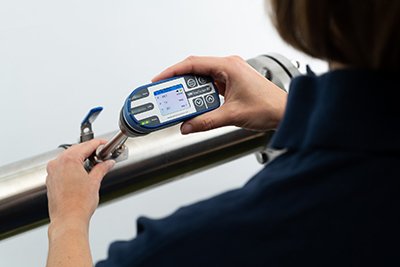Precision control in laboratory applications is paramount for ensuring the safety of personnel and the integrity of experiments. One crucial aspect of this control is the integration of air flowmeters in fume hoods and biological safety cabinets BSCs. Fume hoods and BSCs are essential containment devices used to handle hazardous materials, providing a controlled environment to prevent exposure and contamination. Air flowmeters play a pivotal role in maintaining the desired airflow within these containment units. These devices measure the rate of air exchange, allowing for precise control of ventilation. The integration of high-quality air flowmeters ensures that the airflow is consistently maintained at the optimal levels, preventing the escape of hazardous fumes and maintaining a sterile environment in biological safety cabinets. Fume hoods, commonly used in laboratories handling chemicals and volatile substances, rely on accurate air flow control to contain and exhaust potentially harmful vapors.

By integrating air flowmeters, researchers can monitor and adjust the airflow to meet specific safety requirements. This not only safeguards the laboratory personnel but also enhances the efficiency of experiments by providing a stable and controlled environment. Biological safety cabinets, designed for handling biohazardous materials, require meticulous airflow control to prevent the spread of contaminants. Air flowmeters in BSCs enable researchers to regulate the air velocity, ensuring that any potentially harmful particles are effectively contained within the cabinet. This level of precision is crucial when working with sensitive biological materials, as it minimizes the risk of exposure and maintains the integrity of experiments. The integration of air flowmeters in both fume hoods and biological safety cabinets offers an added layer of safety through real-time monitoring. Researchers can actively observe and adjust airflow parameters based on the specific requirements of their experiments. This not only mitigates potential risks but also provides a dynamic and adaptable laboratory environment.
Moreover, advancements in air flowmeter technology have led to the development of smart and digitally controlled systems. These systems offer enhanced features such as remote monitoring, data logging, and automated adjustments, further streamlining laboratory operations. Researchers can now have real-time access to airflow data, allowing them to make informed decisions and maintain optimal conditions without the need for constant physical presence and see this https://www.wtfarley.com/air-flowmeters. In conclusion, the integration of air flowmeters in fume hoods and biological safety cabinets is instrumental in achieving precision control in laboratory applications. By ensuring accurate monitoring and regulation of airflow, these devices contribute to the safety of laboratory personnel, the protection of experiments, and the overall efficiency of research endeavors. As technology continues to advance, the integration of smart air flowmeter systems further elevates the capabilities of laboratories, providing a higher level of control and adaptability in ensuring a secure and controlled working environment.